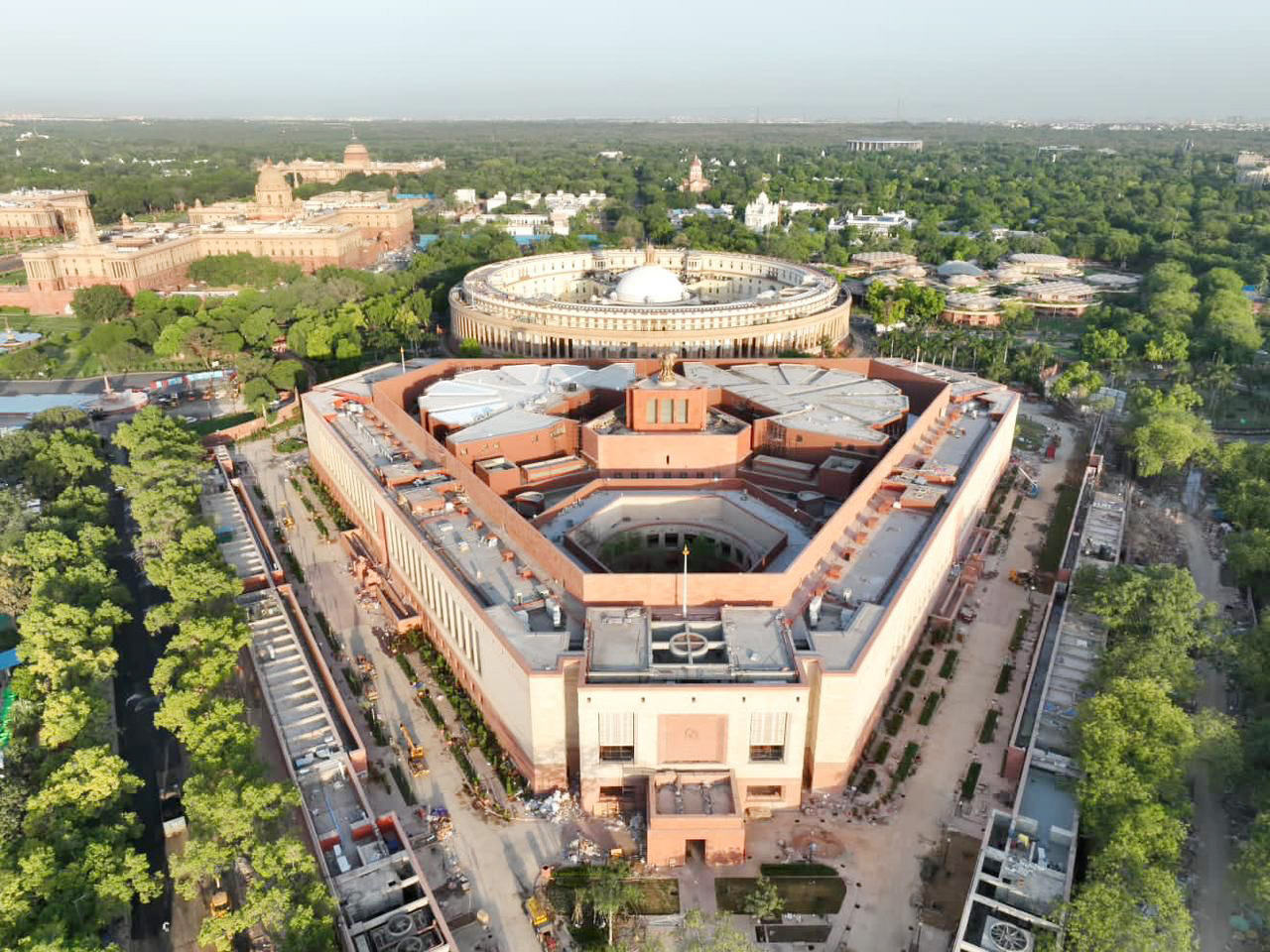India, Government of. India is a republic made up of 28 states and 8 territories, including the National Capital Territory of Delhi and 7 other union territories. Its Constitution went into effect on Jan. 26, 1950. The Constitution guarantees equal rights to all citizens, and it prohibits discrimination on the basis of race, sex, caste (social class), religion, or place of birth. The Constitution also includes guidelines called directive principles of state policy. These principles call for the government to promote the welfare of the people. For example, they urge the government to establish a minimum wage, provide education and jobs for people from disadvantaged backgrounds, and improve public health.
Central government.
India has a parliamentary system of government. The president of India is the head of state, and the prime minister is the head of the government. Parliament is the chief lawmaking body of India. It consists of the president and two houses—the Lok Sabha (House of the People) and the Rajya Sabha (Council of States).

The president of India is elected to a five-year term by an electoral college consisting of the elected members of Parliament and the state and territorial legislatures. Bills approved by Parliament must receive the president’s signature before they can become law.
The prime minister, who is appointed by the president, is the most powerful person in the Indian government. The prime minister is usually the leader of the party that has the largest number of seats in Parliament. The prime minister heads the Council of Ministers. Members of the council are appointed by the president on the prime minister’s recommendation. They assist in running the day-to-day operations of the government. A prime minister who loses the support of a majority in the Lok Sabha can be dismissed by the president. The president can then dissolve the Lok Sabha and call a new election.
The most important of the two houses of the Indian Parliament is the Lok Sabha. States and territories with larger populations send more representatives to the Lok Sabha than do those with smaller populations. Voters elect 543 of the 545 members of the Lok Sabha. The president names the other 2. Members serve a five-year term unless the president calls for elections earlier.
The Rajya Sabha has a maximum of 250 members, who serve six-year terms. The state and territorial legislatures elect all but 12 of the members. The president may nominate up to 12 remaining members, who are well-known academic or cultural figures.
State governments.
Most Indian states have one legislative body, but some have two. Most members are elected by the people. Each state has a governor and a chief minister. The governor is appointed by the president of India. The chief minister is appointed by the governor and is typically the leader of the party with the most seats in the legislature.
The states traditionally have had little power in relation to the central government. For example, Parliament has the right to establish or abolish states and to change state boundaries and names. In addition, Parliament taxes the largest sources of revenue, such as business and personal income. The states have extremely limited and poorer sources of income, including real estate taxes and licensing fees. As a result, most states rely largely on assistance from the central government for their income.
Courts.
The Supreme Court is India’s highest court. Its justices are appointed by the president. The Supreme Court hears cases that involve disputes between states or between a state and the central government. It also acts as the final court of appeal in certain criminal and civil cases. In addition, the Supreme Court serves as the final interpreter of the Constitution and can declare legislation passed by Parliament to be unconstitutional.
India has 25 high courts, which serve the individual states and territories. The high courts hear original cases as well as appeals from lower courts.
Politics.
India has many political parties. The Congress Party, or one of the branches that developed from it, dominated Indian politics for nearly all the years from 1947 to the 1980’s. Since then, the party’s strength has declined. The Bharatiya Janata Party (Indian People’s Party, or BJP) has emerged as a major national party. Regional parties have also won national parliamentary seats from a number of states.
Regional parties play an important role in Indian politics. In some parts of the country, political parties representing certain language, religious, or ethnic groups have successfully formed governments. All Indians who are at least 18 years old can vote.
Armed forces.
India has an army, navy, and air force. More than a million people serve in the armed forces. Military service is voluntary.
